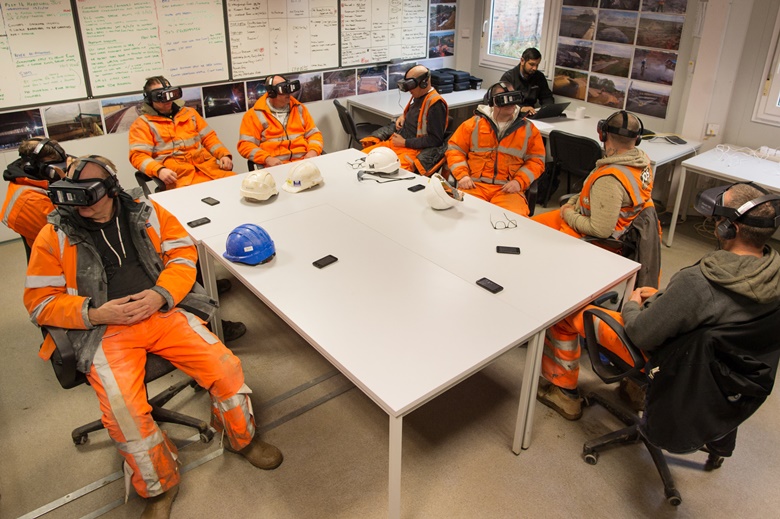Virtual reality training
While employee training is vital to running a successful business operation, a company takes a lot of time, effort, and money to provide the appropriate training. Hands-on training requires an expert on the task, which takes time outside the working day. In less dramatic cases, new hires may have to watch an instructive video, or even worse, just read written instructions on the task they will be performing. Thus, they are forced to imagine what the experience would be like without actually doing it. This leads to misinterpretations and uncertainty.
However, VR training places the educator in a simulated hands-on learning environment. This promises to open up a future of effective, efficient, and cost-effective learning for both small and large companies.
VR training provides learners with real-world, situational scenarios to develop critical customer-service skills including empathy, inclusion, and diversity. Immersive Learning better prepares employees for both their day-to-day roles and rare, high-stakes situations.
VR training metrics reported that VR learners were

The VR training can be divided into the following 3 areas:
Mass training for employees
The first one is mass training for employee development. In simple terms, this category refers to large companies like Walmart. Personally, I believe this is one of the best examples of mass learning.
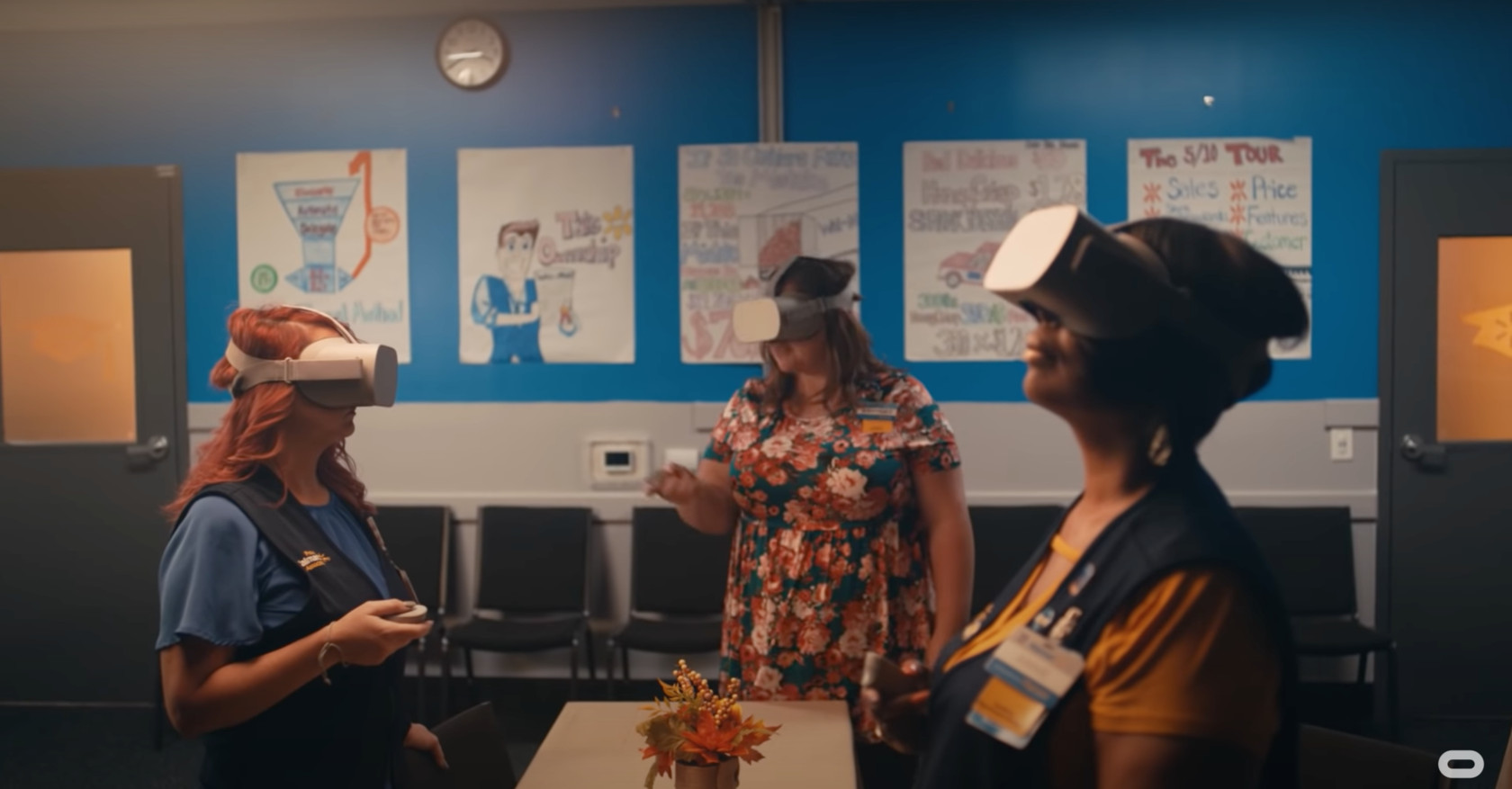
With the huge success in the performance of those who undergo the training in VR, the company is now providing VR training for 1 million Walmart in-store employees.
Such training solutions will catch the attention of larger companies with an extended number of employees, and with a strong need to simulate a real situation that may not occur in real life. But if your employee is ready for this, you don't need to worry.
Another great example in this category is Tyson Foods safety precautions. Every company has instructions on how to proceed in emergency situations. It could be an earthquake, fire, or a blackout in production, where the whole unit must follow instructions.
As a rule, this instruction is written on paper, or even worse, the employee was told about it in the first working days during training, and the responder simply forgets about it.
The main objective of such VR training programs implementation is to reduce the number of injuries by approximately 15%. Thus, in the fiscal year 2017, Tyson experienced more than a 20% reduction in injuries and illnesses compared to the year prior by resorting to VR only.
Aviation, Aerospace & Military
The second segment is interactive simulators with extended logic. Most often, such training is created to teach a long trainable profession, for example, pilots or astronauts. As a rule, training one qualified pilot or astronaut is very expensive and takes a long time. Although, with VR training, training costs and timings are reduced by several times.
One of the earliest adopters of VR was NASA. They have been using VR since its onset in order to train astronauts on a wide array of scenarios that need to be considered to speed on in order to go to space. With VR they are simulating zero-G environments, as well as the aspect of spacewalking. Both require precise movements and the ability to train in a risk-free environment, which offers a way to prepare the would-be astronauts like never before.
The U.S. Air Force launched a Pilot Training class. What said Capt. Jarrod Huffman “In standard training, student pilots are required to obtain 105 in-seat flying hours, with each hour costing the Air Force approximately $1,300. The new class, featuring virtual reality, cuts those flying hours down to about 60, thus cutting the cost per student roughly in half. With an investment of less than $30,000, the new training system will save the Air Force more than $5.7 million per year.
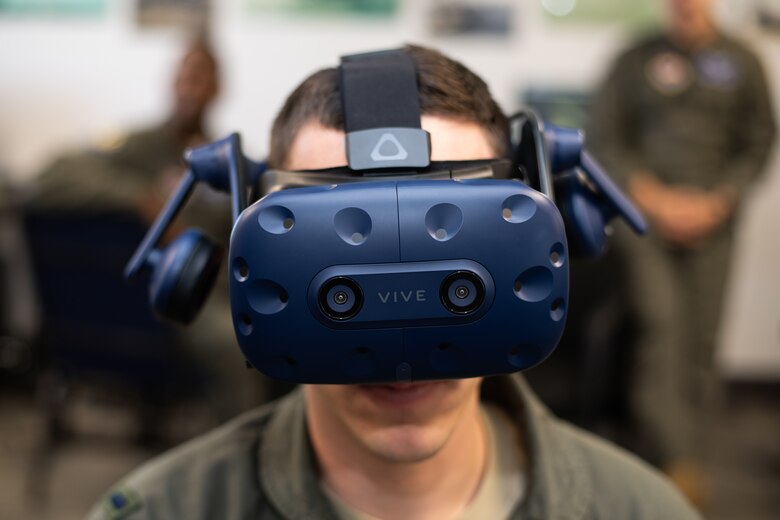
First Lt. Matthew Gulotta, 23rd Flying Training Squadron student pilot, demonstrates the use of the flight simulation, Oct. 22, 2019, at Fort Rucker, Ala.
Industrial Training in VR
The third segment includes training in which you need to learn how to do certain actions in the industrial setting. Typically, such training solutions are suitable for employees who are taught in practice. But there is always a risk of injury, as well as the risk of damage to production equipment. Due to the fact that the employee simply does not know how to do the job right.
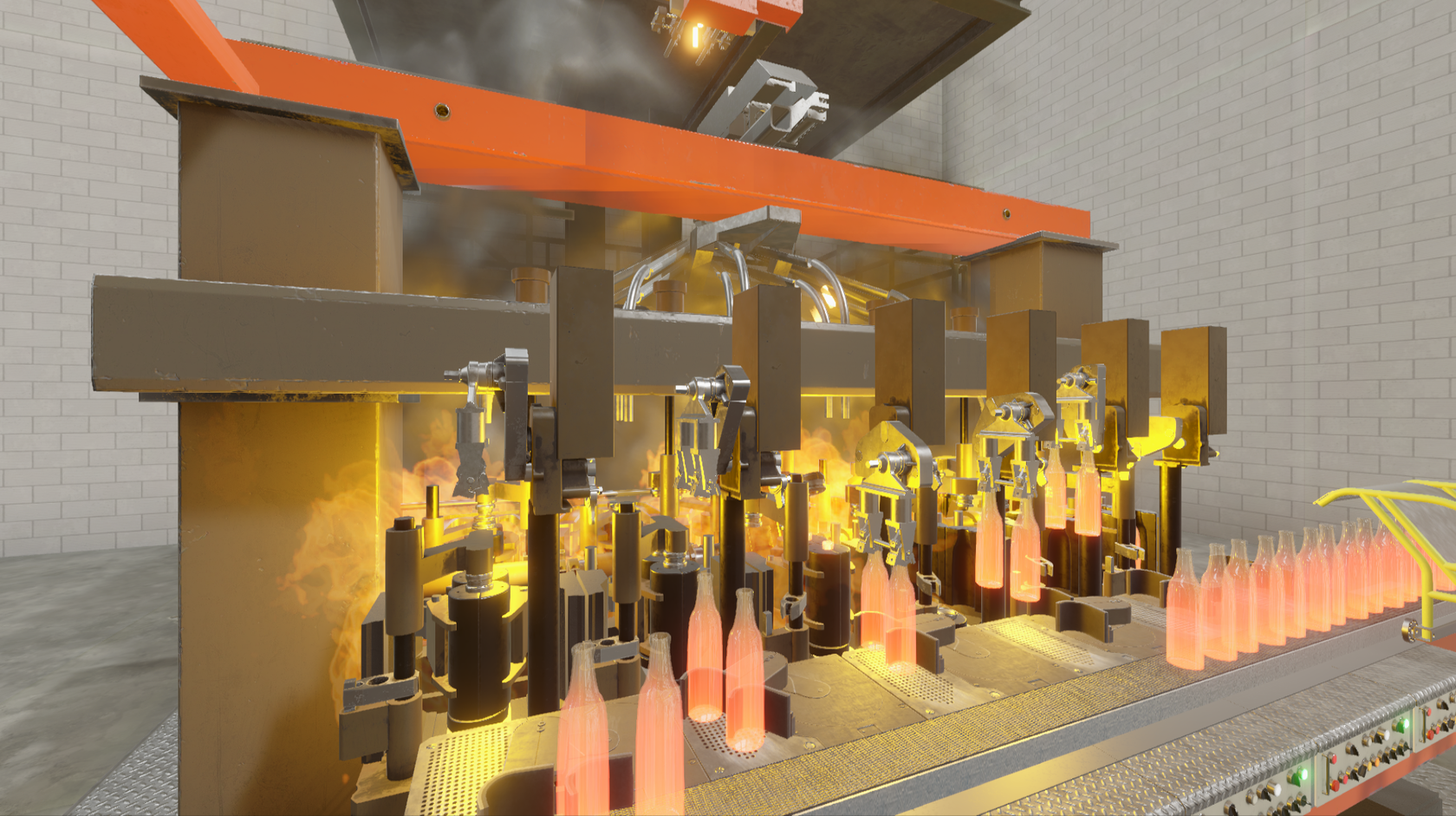
A very good example here is the glass industry, namely the operators of the glass forming machine. The Glass Forming equipment is the machine behind which the operator works off the reel, and if the job is performed right, it would not have a strong impact on the quality of production. Or worse, the operator could be injured. We at VR Inn have developed full-fledged training for IS machine operators. This training teaches operators all the processes of working in the hot-end area completely, without the help of an instructor or trainer. The operator simply puts on a VR headset and plunges into the virtual world, in which a full-fledged course of robots awaits him. The complete training program takes approximately 2 weeks, which is at least 3x times faster compared to the legacy training approach.
This is only one example of the industrial applicability of VR, although it can be implemented in many different industries, such as Mining & Extraction, Refinery, Ferrous & Non-ferrous
metallurgy, etc.
As you can see, in the following exhibit, the better way to learn is by doing.
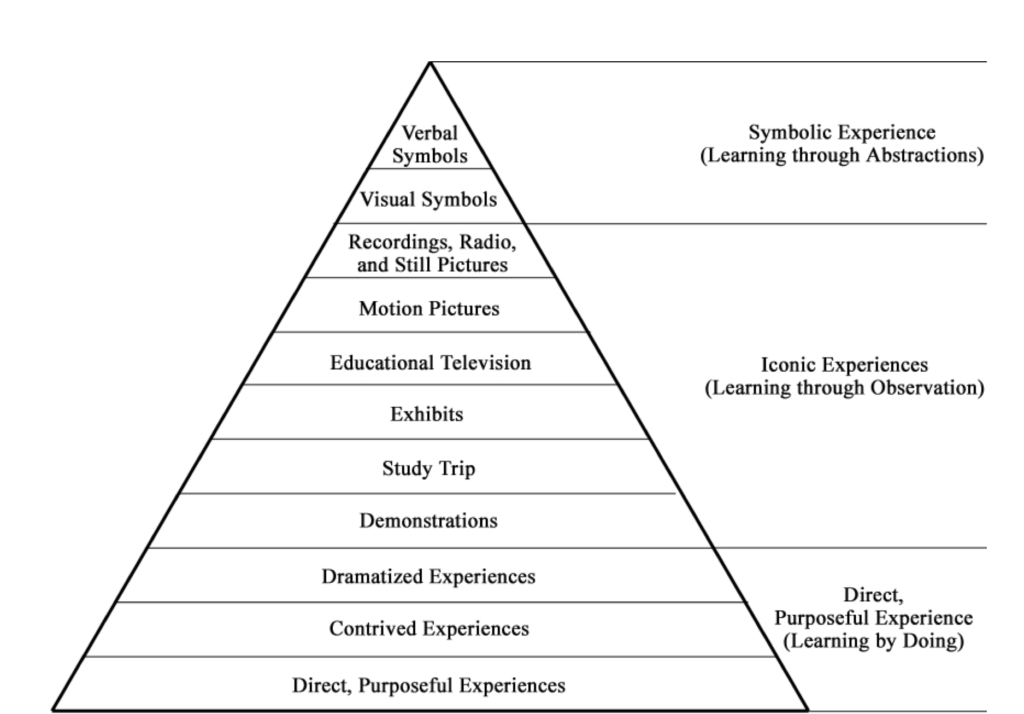
Edgar Dale's Learning Cone
Wrapping Up
As you can see, there is a multitude of use-cases across a vast array of markets for Virtual Reality. VR can reduce harm and risk, and that makes it a no-brainer as a useful tool for training employees in scenarios that in the past were hazardous and costly in terms of the occurrence of mistakes.
VR is becoming a valuable tool for employee learning and development. As more businesses get comfortable with the technology, they will find that employees are more engaged and focused, and therefore can learn faster and more effectively than traditional training approaches.

